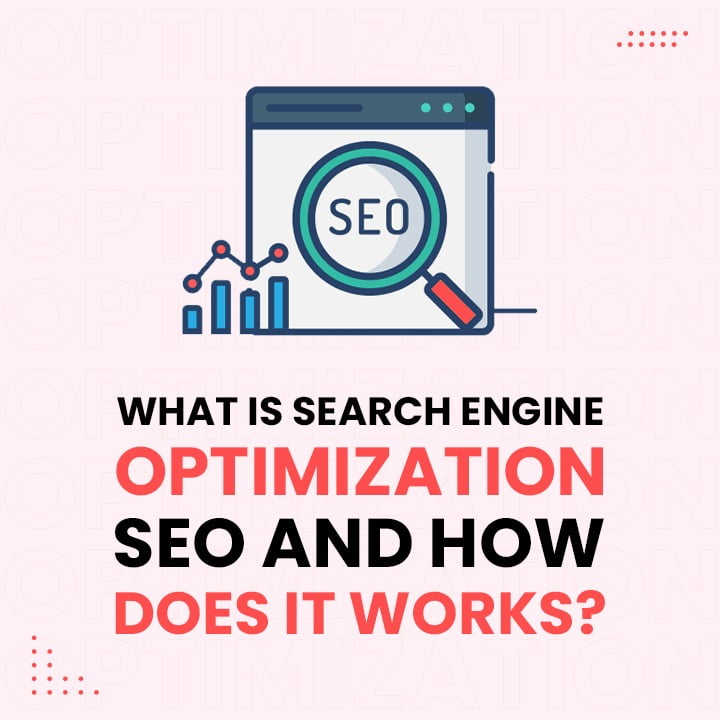
Are you just starting your journey toward SEO? You’ve heard that SEO can help bring more visitors to your website and aid in getting a better ranking, but you’ll need to know how it works and which areas to focus on. Find out the most important information about SEO that all digital marketers must be aware of. You’re in the right place.
What is “Search engine Optimization?
SEO refers to boosting or ranking your website on search engines’ results pages. It is getting traffic via search engines’ organic, free, and editorial outcomes. Be aware it is the greater your site’s position; the more people will see it.
- Good SEO encompasses a variety of actions, such as:
- Searching for relevant keywords brings a significant volume of traffic from search engines.
- Links to relevant sites with high-quality
- The results are then measured.
SEO Basics:
As an expert in digital marketing, making your brand, website, or Denver web design company visible to search engines is crucial, and understanding the methods used to improve SEO keeps you on top of the level. There is a way to classify SEO into three basic components or pillars you need to be conscious of and apply regularly:
Technical Optimization: this is the term used to describe tasks on your site designed to improve SEO but doesn’t relate to the content. It’s usually performed as a background activity.
On-Page Optimized ensures that your website’s content is relevant and provides the most enjoyable user experience. It is about focusing on proper keywords for your content. This is accomplished through the help aid of a CMS. Common CMSs include WordPress, Wix, Drupal, Joomla, Magento, Shopify, and Expression Engine.
Off Page Optimization: improves your website’s rank on search engines by engaging in activities unrelated to your website. This is mostly caused by backlinks, which help in the development of the reputation of your website.
How is SEO working?
Search engines are used by those who have problems and are looking for answers on the internet to find a solution. Search algorithms can be described as computer-based programs that look for clues that give users the precise outcomes they are looking for. Search engines rely on algorithms to find websites and select the ones that rank the best for the search term you are looking for. There are three steps to the way that search engines function, which includes crawling, which is called the stage of discovery. Indexing is the filing stage, followed by ranking as the final retrieval step.
Step 1: Crawling:
The process begins with crawling. Search engines provide web crawlers to search for new sites and record the data they discover. They’re also known as “web crawlers, “spiders,” or robots. They’re employed to discover new websites and regularly review the content of websites they’ve visited to determine if they’ve changed or altered.
Search engines search websites using links they’ve discovered. If you have an article posted on your blog that is linked on your home page, when the search engine scans your site, it will search for a different link and then navigate to the URL of your most recent blog post.
Step 2: The Indexing:
The final stage is indexing. Indexing takes place at the moment that a computer decides the algorithms that will make use of the content it discovers. If a page that has been crawled is thought to be suitable by an algorithm and acknowledged by it, it is added to the index. The index is used to determine the ranking process. If a page on a website or item of content is indexed, the content is archived and stored in a database to be later accessible. Many websites that offer helpful, unique content are included in the index. It is possible that the website will not appear on the index in the event of
- Its content is considered duplicate
- The content is considered to be low-value or even spammy
- It’s not able to be crawled.
- The page or domain did not contain any abounding hyperlinks.
Step 3: Ranking:
The final and third step is the most important one, and it’s called ranking. After engines have crawled or indexed your site, it can be considered ranked. The ranking is only possible when the indexing and crawling process is completed.
Some of the signals search engines use to determine the rank of websites are:
Keywords are included in title tags whether or not the keyword’s synonym is present on the page, as well in the title tag
• The speed with which the page. Make sure the site page loads quickly and is mobile-friendly
• Website credibility: whether the web page or website is considered to be reliable on the subject that is being searched for
Ranking and order results:
Google’s main algorithm for searching is called Google Hummingbird, and it is the one that decides how to organize and rank the results of search engines.
Google also provides a machine-learning sub-algorithm to Google’s search engine, RankBrain.
When RankBrain detects a word or phrase unfamiliar, it employs artificial intelligence to grasp the meaning better by connecting it to search searches.
* It helps Google be aware of the questions it gets through the conversion of keywords into popular concepts and subjects, which implies it will deliver better results for search engine users, even when the questions aren’t common.
Instead of attempting to give the best user-friendly results for search engines, RankBrain rewards websites that are pleasing to users and meet what they expect from users.
Conclusion:
Remember that even after implementing an SEO strategy, SEO is never finished. In the case of SEO, you may need to change your tactics at any time, playing an endless game and waiting to see what happens. With a well-established SEO base in the right place and an amount of patience, the benefits associated with using an SEO strategy will be apparent. They will result in a better customer experience and a greater revenue stream for your business.










